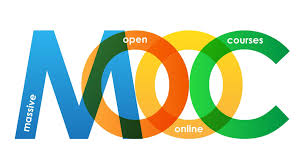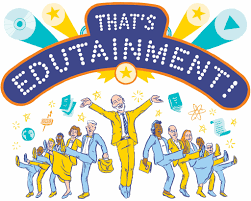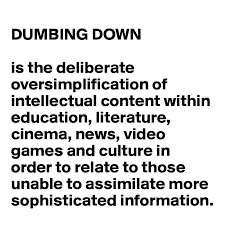How open are MOOCs? Part 1

I think that the concept of Open Educational Resources (OERs) and Massive Open Online Courses (MOOCs) is a wonderful one. I am a great believer in self-directed learning and, having lived and worked in a developing country for most of my life, I can especially see how life-changing access to education can be. MOOCs have evolved over the last decade to offer people a chance to enter a world of incredible content and knowledge, that hitherto they could only have dreamed of.
Watch me summarise what I think are the components of a MOOC: MOOC keywords
But, as Bayne et al. ask, how open is open? For all their opportunities for self-directed learning, ease of learning, the potential for self-improvement and access to global collaborative education, how ‘open’ are MOOCs and OERs in reality? Do they widen access to education , dispensing with educational hierarchies and dissolving economic and geographic barriers (Bayne et al)?
I am going to consider the openness of MOOCs over 2 blogs. This one, the will look aspects of pedagogical and cultural openness. (Hodgkinson-Williams and Czerniewicz et al. )
Interactive opportunities in MOOCS
Cottom in her keynote speech, argued that simply providing access to MOOCs is not enough. There needs to be “high quality instruction and curriculum” (Mcmillan Cottom). For a MOOC to be open there should be different types of pedagogical engagement and assessment strategies deployed by educators to facilitate learning for multiple types of learners. (Czerniewicz et al.). This was also Brown & Adler’s observation (to enable the development of a social culture, and teach people ‘to be, as well to teach about’ ).
Yet as I discovered when I took part in the MOOC: Teaching Young Learners Online, I discovered that this was not necessarily a reality. There was a nod to the social aspects of learning with various opportunities to post comments on forums, but these were not followed up by either the Lead Educators or the students. The technology is being used on an essentialist level of engagement: there is an assumption that interaction is happening because it is a feature of the technical platform of a forum, but the reality is that it is not necessarily happening. So, perhaps MOOCs are not as open as they might be.
Multi-modality in MOOCs
The opportunities for a variety of pedagogical medium are enormous in MOOCs and that is one of the aspects that make them so interesting for learners, no matter where they may be. That is why the multi-modal strategies of videos and TED Talks lend themselves so well to the resource banks of the MOOCs. However, I would observe that there seems to be an over-reliance on quick videos and an assumption that the viewers/learners have short attention spans.

Video edutainment (Moe) has a useful place in teaching, but not as the sole pedagogical medium. The MOOC I tried certainly had an over-reliance on this mode. Similarly, the predetermining pausing of videos that is presented as an interactive opportunity (Knox) is often used, which has the essentialist assumption that understanding will be enhanced simply becase the opportunity for interaction is offered.
Is this…….
…dumbing down or opening up?
MOOCs have to recognise the diversity of their learners. There is a high proportion of learners subscribing to MOOCs who are accessing the courses because they cannot go down the route of formal education. The concept of opening up education to these people provides a level of openness to education that the world has never experienced before. However, the flipside is that in practical terms, the pedagogical strategies adopted by the MOOCs have had to be simplified to allow anyone to access the content. This was certainly the impression I got from my MOOC.

The very openness of the cultural aspects of MOOCs, is leading to a quantity versus quality situation, which in turn leads to a dumbed-down delivery of education. However, is this a negative outcome? Perhaps not?
In my next blog, I will think about social justice and financial issues and how these affect accessibility and openness within MOOCs.
Sources:
Bayne, S., Knox, J., & Ross, J. (2015). Open education: the need for a critical approach. Learning, Media and Technology, 40(3), pp. 247-250.
Moe (2015). OER as online edutainment resources: a critical look at open content, branded content, and how both affect the OER movement. Learning, Media and Technology, 40(3), pp. 350-364.
Brown, J. S., & Adler, R. P. (2008). Minds on fire: open education, the long tail, and Learning 2.0. EDUCAUSE Review, 43(1), pp. 16–32.
Hodgkinson-Williams, C. A., & Trotter, H. (2018). A Social Justice Framework for Understanding Open Educational Resources and Practices in the Global South. Journal of Learning for Development, 5(3), 204-224.
Czerniewicz, L., Deacon, A., Glover, M., & Walji, S. (2017). MOOC-making and open educational practices. Journal of Computing in Higher Education, 29(1), pp. 81-97.
Czerniewicz, L., Deacon, A., Walji, S., & Glover, M. (2017). OER in and as MOOCs. In Adoption and Impact of OER in the Global South Hodgkinson-Williams, C. & Arinto, P.B. (Eds.) (Capetown & Ottowa, African Minds): pp. 349-386.
Knox, J. (2013). The limitations of access alone: moving towards open processes in education. Open Praxis, 5(1), pp. 21-29.
McMillan Cottom, T (2015).
ICDE, UNISA. Oct. [YouTube video of a keynote presentation at the 26th World Conference for the International Council for Open & Distance Education, 13 – 16 October 2015, Sun City, South Africa]





Good post with a strong and clear analysis of the openness of MOOCs. Can MOOC as currently conceived ever deliver on the educational outcomes you cite or that underpin McMillan Cottom advocates for? Are the sort of relational and interactional pedagogies necessary in teaching ‘to be’ are currently possible at the scale and diversity seen within MOOCs? Rather, are MOOCs mainly (so not all) better understood as resources for learning such that participants tend to have already passed certain educational thresholds and have sufficient educational and cultural capital to exploit these freely available resources? Indeed, there is extensive evidence that MOOC participants are predominately the already privileged (see https://www.sciencedirect.com/science/article/pii/S0360131518300769 for a recent-ish overview) which gives an added nuance to your comment on the sense of MOOCs being dumbed-down.